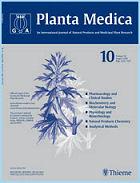
“Several studies in humans have reported that improved pain control is associated with exercise in a variety of painful conditions, including osteoarthritis, fibromyalgia, and neuropathic pain.
Despite the growing amount of experimental data on physical exercise and nociception, the precise mechanisms through which high-intensity exercise reduces pain remain elusive.
Since the glutamatergic system plays a major role in pain transmission, we firstly analyzed if physical exercise could be able to decrease glutamate-induced nociception through G-protein-coupled receptor (G-PCR) activation.
The second purpose of this study was to examine the effect of exercising upon phosphorylation of protein kinase A (PKA) isoforms induced by intraplantar (i.pl.) glutamate injection in mice.
Our results demonstrate that high-intensity swimming exercise decreases nociception induced by glutamate and that i.pl. or intrathecal injections of cannabinoid, opioid, and adenosine receptor antagonists, AM281, naloxone, and 1,3-dipropyl-8-cyclopentylxanthine (DPCPX), respectively, prevent this effect.
Furthermore, the peripheral A1 and opioid receptors, but not CB1, are also involved in exercise’s effect. We also verified that glutamate injection increases levels of phosphorylated PKA (p-PKA). High-intensity swimming exercise significantly prevented p-PKA increase.
The current data show the direct involvement of the glutamatergic system on the hyponociceptive effect of high-intensity swimming exercise as well as demonstrate that physical exercise can activate multiple intracellular pathways through G-PCR activation, which share the same endogenous mechanism, i.e., inhibition of p-PKA.”









